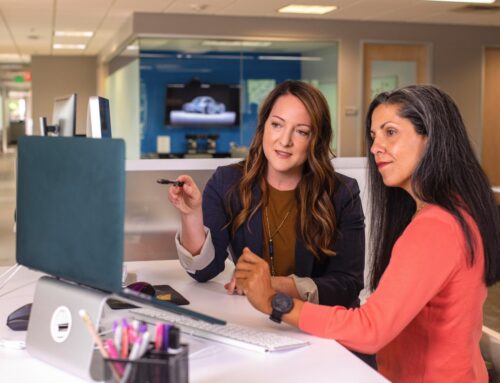Ergonomics. It sounds like some obscure branch of philosophy. Really it’s the science of setting up your office to operate efficiently and safety. While we can’t all afford the xClubby ergonomic workstation there are some things you can do to avoid making your time in the office a pain in the neck.
Ergonomics for Sitting
You’ve probably heard that sitting is bad for you. Scientists have been telling us that for years. Knowing that, you might think getting a standing desk is a good idea. But not so fast. Other studies have shown that prolonged standing at work can also lead to health problems.
If you are going to sit at a desk (and lets face it, most of us are) you should pay attention to how you sit. The Mayo Clinic says you should sit with your feet flat on the floor and your thighs parallel to the floor. If you’re typing your hands should be at or below elbow level.
If you can’t keep your feet flat and your arms in the right position, try adding a footstool or block to bring the ground closer to your feet.
Ergonomics for Using a Computer
According to Cnet.com, your keyboard should tilt away from you. If you think about it, that means you and everyone you know has been using a keyboard wrong for their whole lives.

Photo credit: “Hand On A Keyboard” by Tuomas_Lehtinen
Your keyboard should also be centered in front of you, but hold on. A numberpad can throw this off. Instead of centering the keyboard, center the G and H keys directly in front of you. This will prevent you from having to twist when you type.
Put your mouse and your keyboard next to each other. If you have a keyboard tray, put them both on it. If your keyboard is on your desktop do the same.
Position your monitor an arms-length away. You should be able to just brush the screen with your fingertips if you hold your arm straight out.
Take a Break
No matter how ergonomically correct your workstation is, you should get up and move for a minute or two every 30 minutes. This keeps the blood pumping and prevents cramps and strain.
Just as sitting at a desk all day can take a toll on your body, staring at a screen can take a toll on your eyes. The Worksafe Center advocates the 20-20-20 rule. The name doesn’t exactly roll off the tongue, but the rule can help save your eyes.
Every 20 minutes, look at an object 20 feet or more away for 20 seconds.
Following these basic rules can help you avoid work-related pain, at least until you save up for the xClubby.





